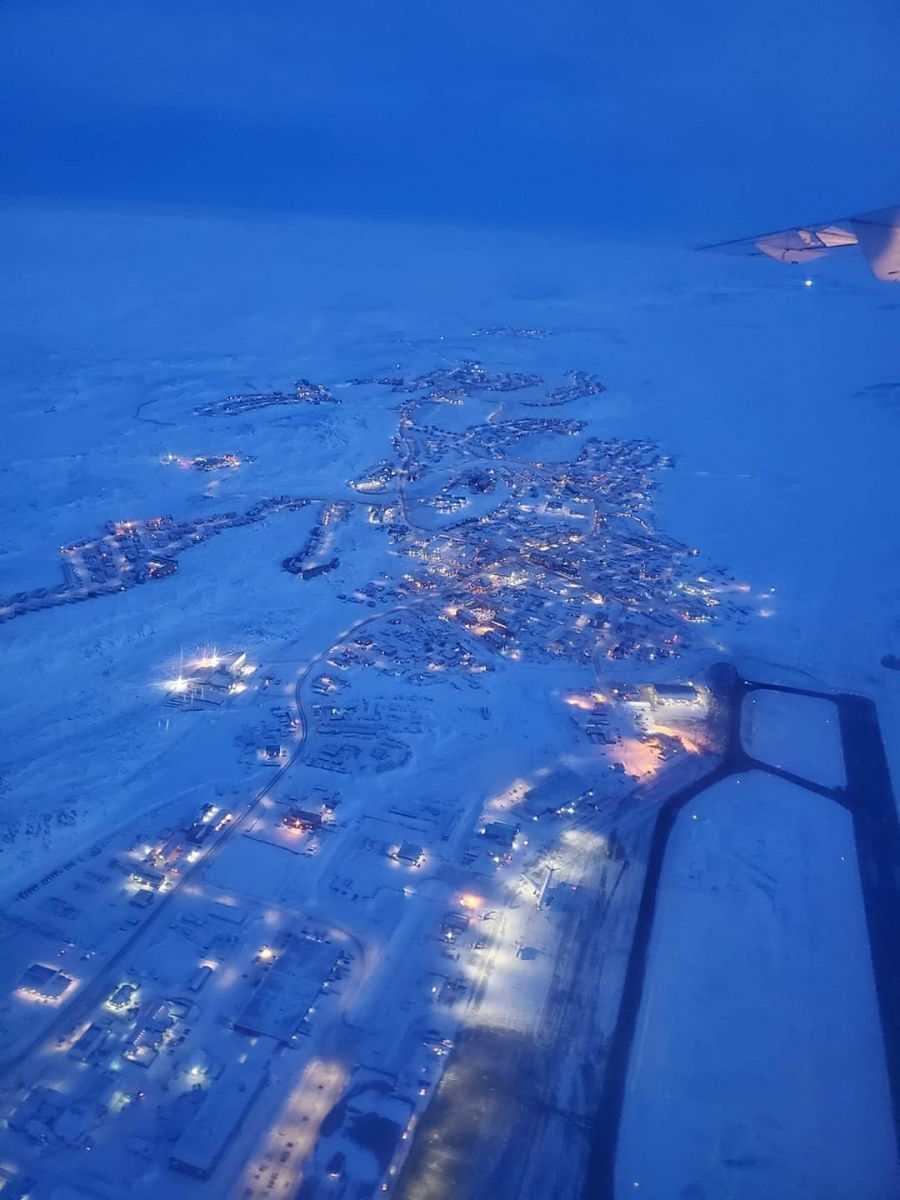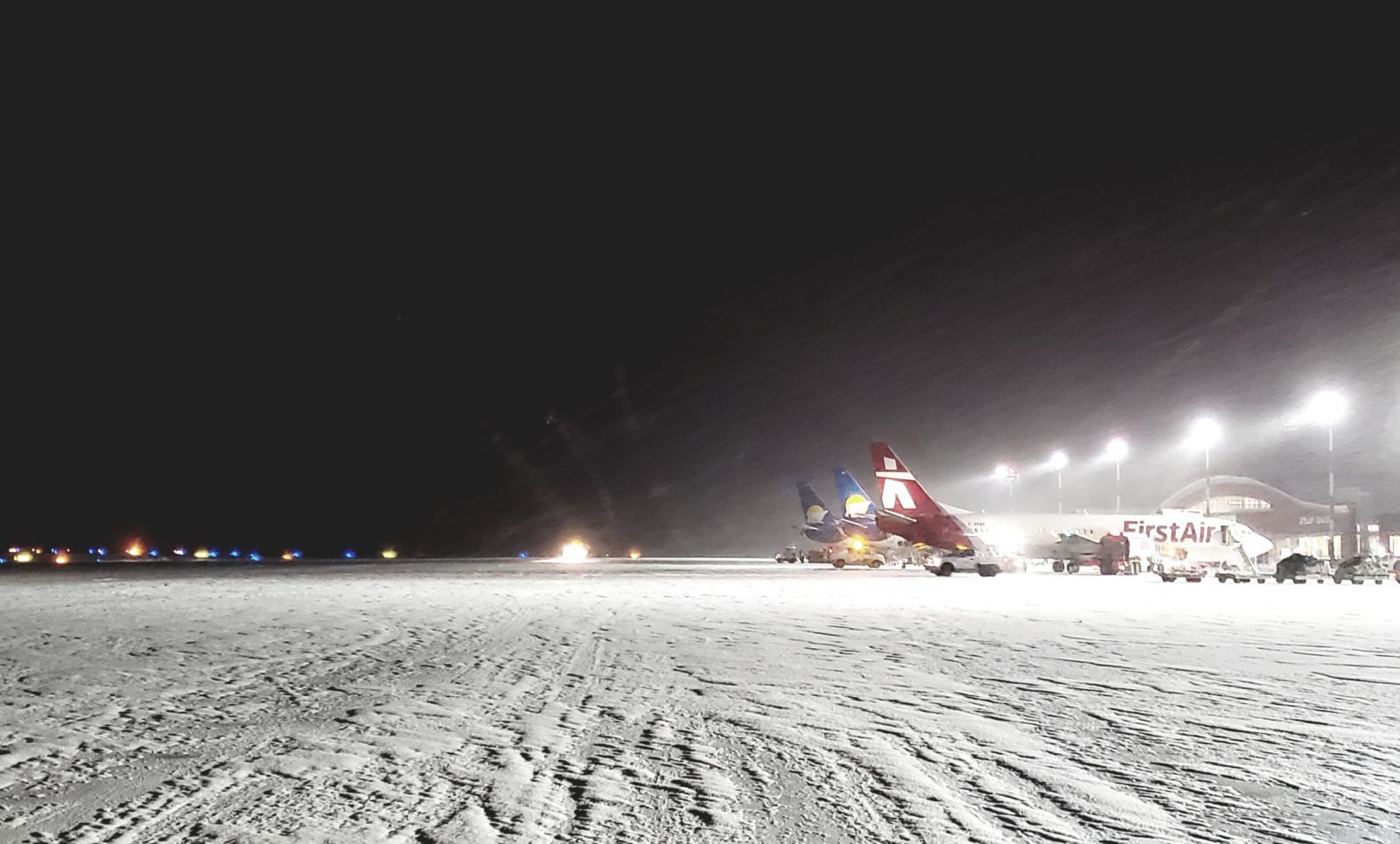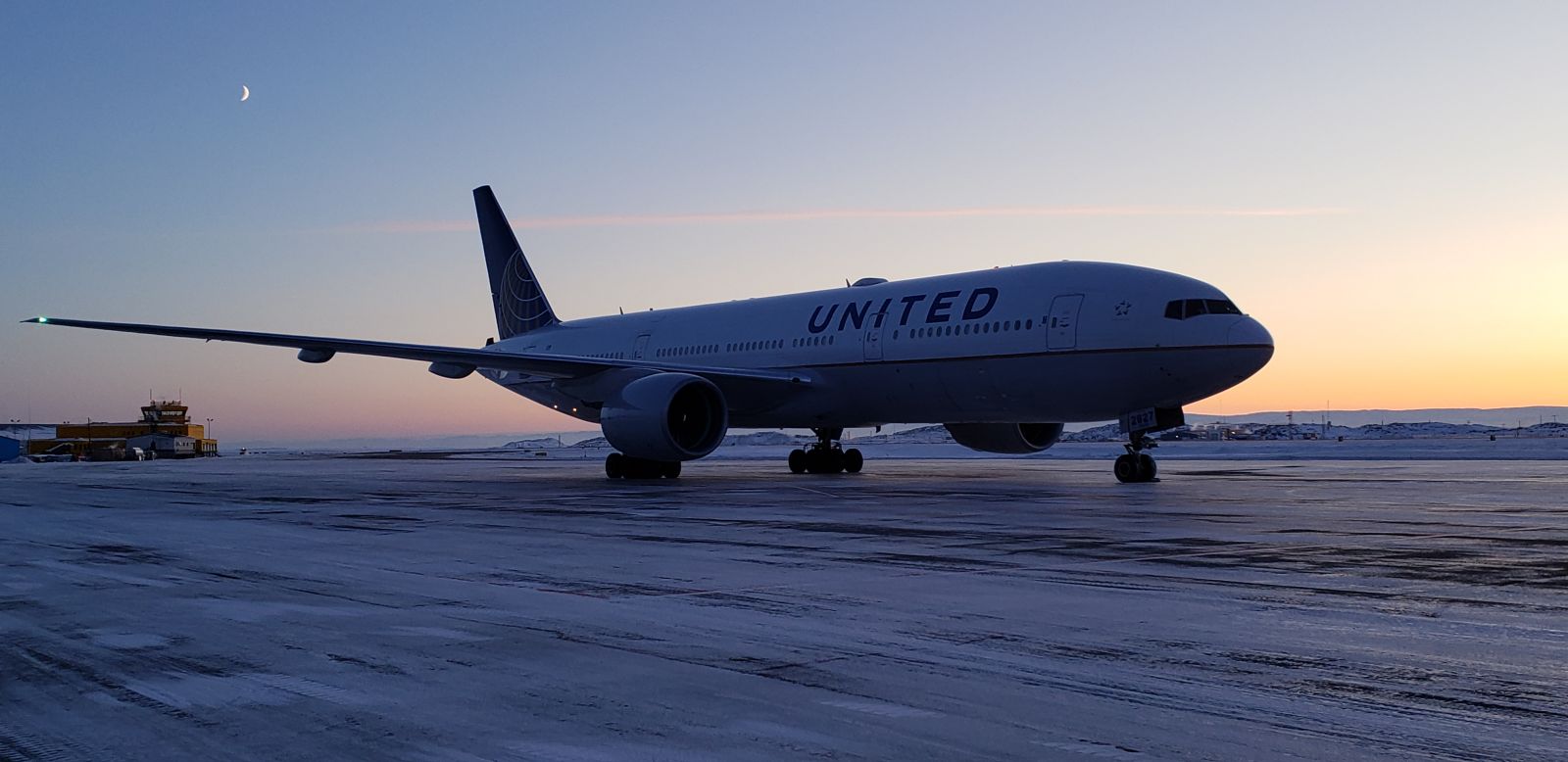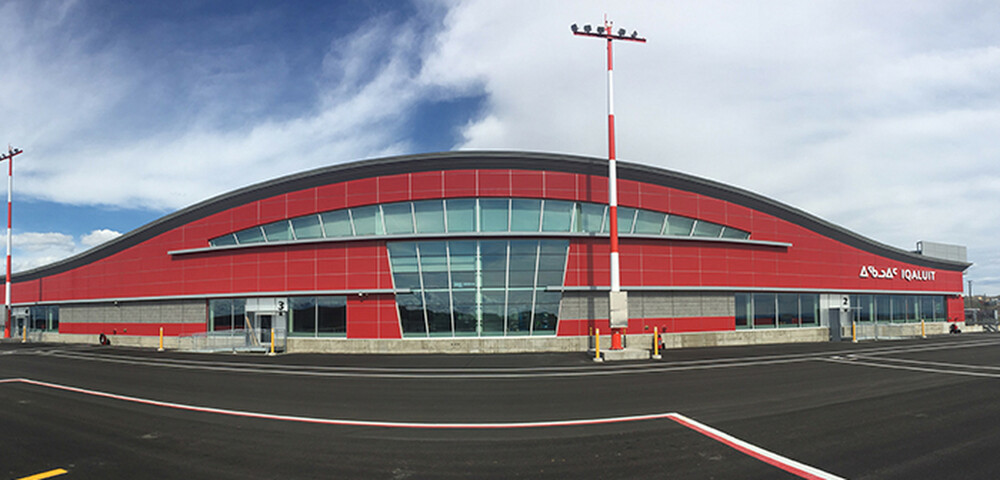Three years ago this week, a bright red, state-of-the-art facility opened its doors to provide critical services to Canada's most northern communities for many years to come.
On August 9, 2017, the new terminal building at Iqaluit International Airport (YFB) opened to the public. Since that day, YFB has been operating smoothly, meeting a high standard of service delivery, earning positive repute among the international airline community and helping Iqaluit evolve as a transportation hub for the territory of Nunavut.
Airport Operations
Iqaluit International Airport represents the first major project for Winnipeg Airport Services Corp. (WASCO), a subsidiary of Winnipeg Airports Authority, dating back to when construction first began on the new terminal in 2014. Awarded by the Government of Nunavut, this first-of-its-kind, 30-year Private-Public Partnership agreement to build, design, operate and maintain the airport involves WASCO, Arctic Infrastructure Partners and Nunavut Airport Services Limited (NASL) —a wholly owned subsidiary of WASCO.
From staffing fire fighters to trades workers, all 38 staff members operating the airport are part of NASL. All but one employee resides in the community of Iqaluit, which is by design to ensure team members are available when needed in case conditions change at the airport.
In the event of inclement weather, cold winds can trigger alarms within the sophisticated facility signaling a door is not properly closed. The modern facility requires a lot of attention, as does the environment.
"We only have one runway and so we have to make sure that it is serviceable 24/7," said Pierre Payette, Service Director for NASL.
Part of maintaining the runway also includes making sure wildlife is under control to provide a safe landing environment. From massive arctic hare to your usual fox, the team monitors the airfield for any animals, especially during peak bird migration periods.

Service Delivery
With more than 172,000 passengers moving through YFB in 2019, the airport plays a valuable role in connecting people. From those living in remote communities to local residents, YFB also sees many essential workers come and go, such as healthcare professionals or construction crews.
While some construction companies arrive by a private jet, the hub for commercial service to Iqaluit is based out of Ottawa. Service out of Montreal has been temporarily interrupted amid COVID-19. Another hub for medical needs in and out of Iqaluit is Winnipeg Richardson International Airport. Then, there's the critical cargo component. Northern residents rely on air cargo to deliver their essentials for life, like food and clothing, especially since goods can't arrive via boat during the winter when the sea is frozen.
"The airport is the lifeline not only to Iqaluit but to all the hamlets," said Payette. "It is the hub for all of the freight, food and now there are some ships coming in but the ship season is very short from mid-July to mid-October."

At this time, as we reflect on the terminal's third birthday, the team is working diligently to help protect the community from COVID-19. While Nunavut has not had any cases yet, airport staff and partners are working closely with public health authorities and the Government of Nunavut to keep it that way. Cleaning practices have been heightened, briefings regarding self-isolation protocols are being delivered by public health officials, a 14-day self-isolation period is required prior to travel and physical distancing is being carried out in all areas thanks to the spacious facility.
With additional signage up in the airport to help ensure best practices, all written materials must be shared in four languages: English, French, Inuktitut and Syllabics. The commitment to service delivery at YFB is heightened by the fact that all of the employees living in the area know how crucial their role to ensuring the livelihood of their families and neighbours.
International Airline Community
It's not uncommon to see a large, wide-body airplane bound for an international destination touch down in Iqaluit. The flight paths overhead of the region are extremely busy with air traffic due to the effectiveness of flying using the polar routes. Polar routes support large international airline carriers in reaching their destinations faster and by using less fuel, which is why many cross-continental flights will take this path.
"It really has to do with the polar routes so flying over the top versus flying around," said Mike O'Gorman, Managing Director for WASCO. "These airlines that fly over the top require alternate airports to be available just in case there is an emergency."
If for any reason an aircraft needs to touch down during flight, be it for medical needs or a mechanical check, Iqaluit International Airport proudly accommodates them. In some cases, this has meant the entire community coming together to shelter more than 200 passengers who needed to stay overnight until the flight could resume to its intended destination.
The new terminal helps YFB leave a strong impression with these airlines as there is room for them at the gate, efficient security processes and a willingness to help ensure safe voyages onward.

Transportation Hub
Prior to COVID-19, YFB saw a 7 per cent jump in passenger traffic over the previous year and continues to see the cargo sector grow to support the region. The new facility was designed with the future in mind and has plenty of room to accommodate long term growth over the next couple decades. Even despite the pandemic, the airport is still seeing steady landings day and night as air traffic is truly an vital service in Canada's north.
"We are the lifeline of the community and of Nunavut the territory so the expectations are very high because people depend on us," said Payette. "There is no road service, we are an island and all the hamlets are very isolated so we must perform."



